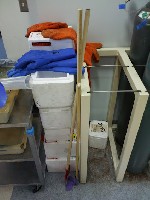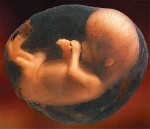 |
 |
Post Archive
January (2)
Have we entered the era of the 1 year sequencer release cycle? *Updated*
Tuesday, January 13, 2015
Illumina's $1000 Genome*
Wednesday, January 15, 2014
2013 (4)Have we entered the era of the 1 year sequencer release cycle? *Updated*
Tuesday, January 13, 2015
Illumina's $1000 Genome*
Wednesday, January 15, 2014
May (1)February (3)
A coming of age for PacBio and long read sequencing? #AGBT13
Saturday, February 23, 2013
Next Generation Sequencing rapidly moves from the bench to the bedside #AGBT13
Friday, February 22, 2013
#AGBT day one talks and observations: WES/WGS, kissing snails, Poo bacteria sequencing
Wednesday, February 20, 2013
2012 (5)A coming of age for PacBio and long read sequencing? #AGBT13
Saturday, February 23, 2013
Next Generation Sequencing rapidly moves from the bench to the bedside #AGBT13
Friday, February 22, 2013
#AGBT day one talks and observations: WES/WGS, kissing snails, Poo bacteria sequencing
Wednesday, February 20, 2013
September (2)
Got fetal DNA on the brain?
Friday, September 28, 2012
Memes about 'junk DNA' miss the mark on paradigm shifting science
Friday, September 7, 2012
August (1)
So, you've dropped a cryovial or lost a sample box in your liquid nitrogen container...now what?
Thursday, August 16, 2012
July (1)February (1)
A peril of "Open" science: Premature reporting on the death of #ArsenicLife
Thursday, February 2, 2012
2011 (20)Got fetal DNA on the brain?
Friday, September 28, 2012
Memes about 'junk DNA' miss the mark on paradigm shifting science
Friday, September 7, 2012
So, you've dropped a cryovial or lost a sample box in your liquid nitrogen container...now what?
Thursday, August 16, 2012
A peril of "Open" science: Premature reporting on the death of #ArsenicLife
Thursday, February 2, 2012
October (7)
Antineoplastons? You gotta be kidding me!
Thursday, October 27, 2011
YouTube: Just a (PhD) Dream
Thursday, October 27, 2011
Slides - From the Bench to the Blogosphere: Why every lab should be writing a science blog
Wednesday, October 19, 2011
Fact Checking AARP: Why soundbytes about shrimp on treadmills and pickle technology are misleading
Monday, October 17, 2011
MHV68: Mouse herpes, not mouth herpes, but just as important
Monday, October 17, 2011
@DonorsChoose update: Pictures of the materials we bought being used!!
Friday, October 14, 2011
Is this supposed to be a feature, @NPGnews ?
Tuesday, October 4, 2011
August (3)
A dose of batshit crazy: Bachmann would drill in the everglades if elected president
Monday, August 29, 2011
A true day in lab
Wednesday, August 10, 2011
A day in the lab...
Monday, August 8, 2011
July (1)June (1)May (1)April (2)
University of Iowa holds Science Writing Symposium
Tuesday, April 26, 2011
Sonication success??
Monday, April 18, 2011
March (3)
Circle of life
Thursday, March 17, 2011
Curing a plague: Cryptocaryon irritans
Wednesday, March 9, 2011
Video: First new fish in 6 months!!
Wednesday, March 2, 2011
February (1)January (1)
2010 (13)Antineoplastons? You gotta be kidding me!
Thursday, October 27, 2011
YouTube: Just a (PhD) Dream
Thursday, October 27, 2011
Slides - From the Bench to the Blogosphere: Why every lab should be writing a science blog
Wednesday, October 19, 2011
Fact Checking AARP: Why soundbytes about shrimp on treadmills and pickle technology are misleading
Monday, October 17, 2011
MHV68: Mouse herpes, not mouth herpes, but just as important
Monday, October 17, 2011
@DonorsChoose update: Pictures of the materials we bought being used!!
Friday, October 14, 2011
Is this supposed to be a feature, @NPGnews ?
Tuesday, October 4, 2011
A dose of batshit crazy: Bachmann would drill in the everglades if elected president
Monday, August 29, 2011
A true day in lab
Wednesday, August 10, 2011
A day in the lab...
Monday, August 8, 2011
University of Iowa holds Science Writing Symposium
Tuesday, April 26, 2011
Sonication success??
Monday, April 18, 2011
Circle of life
Thursday, March 17, 2011
Curing a plague: Cryptocaryon irritans
Wednesday, March 9, 2011
Video: First new fish in 6 months!!
Wednesday, March 2, 2011
December (3)
The first step is the most important
Thursday, December 30, 2010
Have we really found a stem cell cure for HIV?
Wednesday, December 15, 2010
This paper saved my graduate career
Tuesday, December 14, 2010
November (3)
Valium or Sex: How do you like your science promotion
Tuesday, November 23, 2010
A wedding pic.
Tuesday, November 16, 2010
To rule by terror
Tuesday, November 9, 2010
October (2)
Summary Feed: What I would be doing if I wasn't doing science
Wednesday, October 6, 2010
"You have more Hobbies than anyone I know"
Tuesday, October 5, 2010
September (5)
Hiccupping Hubris
Wednesday, September 22, 2010
A death in the family :(
Monday, September 20, 2010
The new lab fish!
Friday, September 10, 2010
What I wish I knew...Before applying to graduate school
Tuesday, September 7, 2010
Stopping viruses by targeting human proteins
Tuesday, September 7, 2010
The first step is the most important
Thursday, December 30, 2010
Have we really found a stem cell cure for HIV?
Wednesday, December 15, 2010
This paper saved my graduate career
Tuesday, December 14, 2010
Valium or Sex: How do you like your science promotion
Tuesday, November 23, 2010
A wedding pic.
Tuesday, November 16, 2010
To rule by terror
Tuesday, November 9, 2010
Summary Feed: What I would be doing if I wasn't doing science
Wednesday, October 6, 2010
"You have more Hobbies than anyone I know"
Tuesday, October 5, 2010
Hiccupping Hubris
Wednesday, September 22, 2010
A death in the family :(
Monday, September 20, 2010
The new lab fish!
Friday, September 10, 2010
What I wish I knew...Before applying to graduate school
Tuesday, September 7, 2010
Stopping viruses by targeting human proteins
Tuesday, September 7, 2010
 |
 |
Blogger Profile
Brian Krueger, PhD
Columbia University Medical Center
New York NY USA
Brian Krueger is the owner, creator and coder of LabSpaces by night and Next Generation Sequencer by day. He is currently the Director of Genomic Analysis and Technical Operations for the Institute for Genomic Medicine at Columbia University Medical Center. In his blog you will find articles about technology, molecular biology, and editorial comments on the current state of science on the internet.
My posts are presented as opinion and commentary and do not represent the views of LabSpaces Productions, LLC, my employer, or my educational institution.
Please wait while my tweets load 
 |
 |
Post Tags
youtube sequencing genetics technology conference wedding pictures not science contest science promotion outreach internet cheerleaders rock stars lab science tips and tricks chip-seq science politics herpesviruses
 |
 |
Around the Network
Author: Brian Krueger, PhD | Comments: 9
Author: Brian Krueger, PhD | Comments: 0
Author: Brian Krueger, PhD | Comments: 2
Author: Brian Krueger, PhD | Comments: 2
 |
 |
Blogroll
Drugmonkey (Scientopia)
How AAAS and Science magazine really feel about sexual harassment cases in science
Mar 10, 2016, 1:37pm
Mar 08, 2016, 11:30am
Jul 14, 2011, 8:33pm
Views: 35558 | Comments: 6
Last by Mike Gruidl on Feb 22, 2013, 1:22pm
Last by Mike Gruidl on Feb 22, 2013, 1:22pm

It's bound to happen in every lab. Someone is going to get distracted and for whatever reason a box full of tubes or tubes themselves are going to accidentally get dropped in the lab's liquid nitrogen container. A lot of people might say, "Screw it," and leave those samples on the bottom of the tank. This might be a good solution for some samples, but what happens when you drop half a rack of boxes to the bottom of your tank? And what happens when those boxes are full of very important cell lines that keep your lab running?
I don't want to admit it, but this is exactly what happened to me today. I was preparing an order for a collaborator and getting 5 of my cell lines out of liquid nitrogen storage. I was explaining to my summer students how to safely handle liquid nitrogen, always wear cryoprotective gloves, lift the rack slowly and be sure to drain all of the liquid nitrogen before handling the boxes, etc. I got the box I needed, and put the rack back in the tank while I was hunting for my cells. Unfortunately, I forgot to put the wire back in the rack that holds the boxes in place. When I went to put the box back that I was handling, I pulled the rack up and half the boxes were gone. "Oh, shit."
So now the rack doesn't fit in . . . More
I don't want to admit it, but this is exactly what happened to me today. I was preparing an order for a collaborator and getting 5 of my cell lines out of liquid nitrogen storage. I was explaining to my summer students how to safely handle liquid nitrogen, always wear cryoprotective gloves, lift the rack slowly and be sure to drain all of the liquid nitrogen before handling the boxes, etc. I got the box I needed, and put the rack back in the tank while I was hunting for my cells. Unfortunately, I forgot to put the wire back in the rack that holds the boxes in place. When I went to put the box back that I was handling, I pulled the rack up and half the boxes were gone. "Oh, shit."
So now the rack doesn't fit in . . . More
Views: 1906 | Comments: 1
Last by Brian Krueger, PhD on Apr 24, 2011, 7:31pm
Last by Brian Krueger, PhD on Apr 24, 2011, 7:31pm
I've been working on this project on and off for a few months now. You may remember my previous post about attempting sonication trials. Unfortunately, things in lab have been busy trying to get a new graduate student started and troubleshooting problems with other experiments so I haven't had as much time to devote to this project as I would like. I've spent the past month or so trying to optimize my sonication conditions on a sonicator that's in my building, and I've gotten less than spectacular results (I've tested at least 10 different conditions on this machine ex: buffers, cell densities, sonication intensity, sonication duration). I'm looking to break my DNA up into short 100-300 base pair fragments and previously I was only able to get them down to about 600. I decided it was time to test other sonicators and here are the results.

Fisher 100 sonic dismembrator vs Misonix 4000 - 1/8" tapered tip.1 mL of RIPA buffer containing 1x107 cells. Numbers above the lanes indicate the number of cycles that were done (30 seconds on 1.5 minutes of rest between cycles)
. . . More

Fisher 100 sonic dismembrator vs Misonix 4000 - 1/8" tapered tip.1 mL of RIPA buffer containing 1x107 cells. Numbers above the lanes indicate the number of cycles that were done (30 seconds on 1.5 minutes of rest between cycles)
 |
 |
Friends






Jaeson, that's not true at most places. Top tier, sure, but 1100+ should get you past the first filter of most PhD programs in the sciences. . . .Read More
All I can say is that GRE's really do matter at the University of California....I had amazing grades, as well as a Master's degree with stellar grades, government scholarships, publication, confere. . .Read More
Hi Brian, I am certainly interested in both continuity and accuracy of PacBio sequencing. However, I no longer fear the 15% error rate like I first did, because we have more-or-less worked . . .Read More
Great stuff Jeremy! You bring up good points about gaps and bioinformatics. Despite the advances in technology, there is a lot of extra work that goes into assembling a de novo genome on the ba. . .Read More
Brian,I don't know why shatz doesn't appear to be concerned about the accuracy of Pacbio for plant applications. You would have to ask him. We operate in different spaces- shatz is concerned a. . .Read More